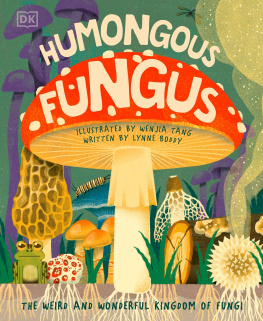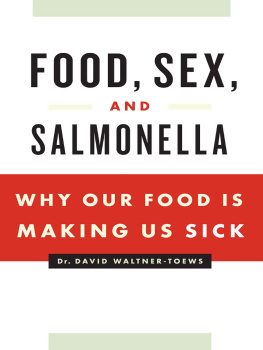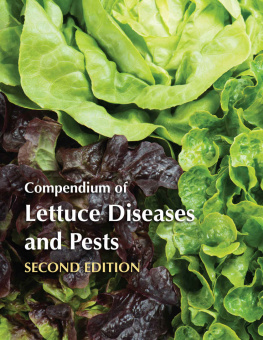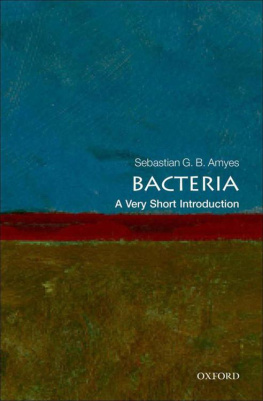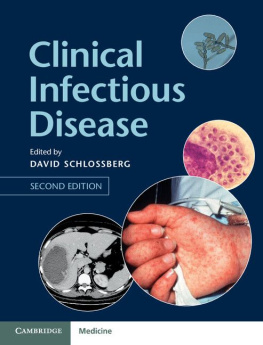TAPEWORMS, LICE, AND PRIONS
Tapeworms, Lice, and Prions
A compendium of unpleasant infections
DAVID I GROVE


Great Clarendon Street, Oxford, OX2 6DP,
United Kingdom
Oxford University Press is a department of the University of Oxford.
It furthers the Universitys objective of excellence in research, scholarship, and education by publishing worldwide. Oxford is a registered trade mark of Oxford University Press in the UK and in certain other countries
David I. Grove 2014
The moral rights of the author have been asserted
First Edition published in 2014
Impression: 1
All rights reserved. No part of this publication may be reproduced, stored in a retrieval system, or transmitted, in any form or by any means, without the prior permission in writing of Oxford University Press, or as expressly permitted by law, by licence or under terms agreed with the appropriate reprographics rights organization. Enquiries concerning reproduction outside the scope of the above should be sent to the Rights Department, Oxford University Press, at the address above
You must not circulate this work in any other form and you must impose this same condition on any acquirer
Published in the United States of America by Oxford University Press 198 Madison Avenue, New York, NY 10016, United States of America
British Library Cataloguing in Publication Data
Data available
Library of Congress Control Number: 2013942199
ISBN 9780199641024
Printed in Great Britain by
Clays Ltd, St Ives plc
CONTENTS
This book had its genesis in the prodding of my wife, Marilyn, who persuaded me to write it. She had to pay her penance by reading the manuscript and making comments and corrections. My grateful thanks are due to Margaret Wigglesworth who scoured every page looking for errors. That this book saw the light of day is due to the enthusiasm of Latha Menon, Senior Commissioning Editor at Oxford University Press who successfully put the case to the Delegates of the Press. To them, I am most grateful for agreeing to its publication. My thanks also to Emma Ma, Assistant Commissioning Editor, Jenny Rogers, Production Editor, and to all those unknown to me, who expertly put this book in the form which you see before you. Finally, this book could never have been written without the staff (who were forever helpful) and the facilities of the Barr Smith Library and its branches of the University of Adelaide.
We need reminding, now more than ever, that the capacity of medicine to deal with infectious diseases was not a lucky fluke, nor was it something that happened simply as the result of the passage of time. It was the direct outcome of many years of hard work, done by imaginative and skilled scientists, none of whom had the faintest idea that penicillin and streptomycin lay somewhere in the decades ahead. It was basic science of a very high order, storing up a great mass of interesting knowledge for its own sake, creating, so to speak, a bank of information, ready for drawing on when the time for intelligent use arrived.
LEWIS THOMAS
The Medusa and the Snail:
More notes of a biology watcher, 1979
PART I
INFECTION
the search for its causes
Infectious diseases have been the major cause of sickness and death throughout recorded history, and no doubt in pre-history as well. We have all heard of the Black Death, tuberculosis, meningococcal disease, and swine flu. But what are infectious diseases? My trusty Shorter Oxford English Dictionary says they are diseases communicated by infections. But what is an infection? That same dictionary says in its third definition that an infection is the agency, substance, germ or principle by which an infectious disease is communicated or transmitted. This seems suitably vague and tautological. It reflects humanitys understanding, or rather lack of understanding, of infectious diseases until recent times. The word itself is derived from the Latin word infectus, the past participle of inficere meaning to dip in, put into, taint, or stain. Its use long antedated the knowledge of pathogenic micro-organisms and implied tainting with morbid matter, or contamination with noxious effluvia, vapours, and miasmata. In other words, nobody had a clue.
What about contagious diseases? Are they the same thing as infectious diseases? Some people use the two terms as synonyms but strictly speaking contagious diseases are a subset of infectious diseases acquired by touch. The word is derived from the Latin tangere meaning to touch. Contagion has rather gone out of fashion these days so perhaps contagious diseases is an expression best forgotten.
A rather better definition for an infectious disease is that it is an illness caused by a microbe, a word which was coined by the French surgeon Charles Sdillot (18041883) in 1878. This has the advantage of allowing us to include diseases caused by microbes which come from other people, from animals, from the environment, and from ourselves (for we all carry micro-organisms on our skin and in our mouth and bowel). But what is a microbe? Again the dictionary defines a microbe, which comes from Greek words micros and bios meaning small and life, as an extremely minute living creature whether plant or animal; chiefly applied to the bacteria causing diseases and fermentation. So, a microbiologist is a person who studies the agents that cause infectious diseases whereas an infectious diseases doctor is someone who tries to cure a patient with an infection.
This is a rather more practical definition but it still has some problems. As you will soon see when we consider worms, these are not microscopic at all. Indeed some are huge; a tapeworm may reach 5 metres in length although its eggs are certainly microscopic. And are all infectious agents living? Until a couple of decades ago, everyone would have agreed that they are. Most infectious organisms carry the building blocks of life, DNA and RNA. Then it was found that viruses are made up of either DNA or RNA. Then, most confusingly of all, prions were discovered. We shall consider these in our penultimate chapter; they have neither DNA nor RNA and are simply proteins. I dont think anyone would consider these as living.
This book is concerned with the discovery of the most important infectious agents throughout history and in our own time, who discovered them, and how they were related to the diseases that they caused. In 1894, Robert Louis Stevenson died in Samoa at the age of 44 from tuberculosis. He once said that it is not a hard thing to know what to write; the hard thing is to know what to leave out. That has been my problem too. It is perforce a matter of my judgement.
You can read any individual chapter with profit if you are particularly interested in a certain disease or particular organism. However, you will gain more benefit if you read the book from beginning to end. This is because it is arranged in a manner which roughly reflects both the size of the organisms and the order in which they were discovered. It therefore somewhat matches the development and maturation of ideas in infectious diseases and the progressive introduction of novel, powerful technologies that have allowed new discoveries. Furthermore, technical terms or words tend to be defined the first time that they are used. If you are uncertain of the meaning of a word, flip over to the glossary near the end of the book and it may well be defined there. There is also a section there telling you how to pronounce unfamiliar words.
Next page



